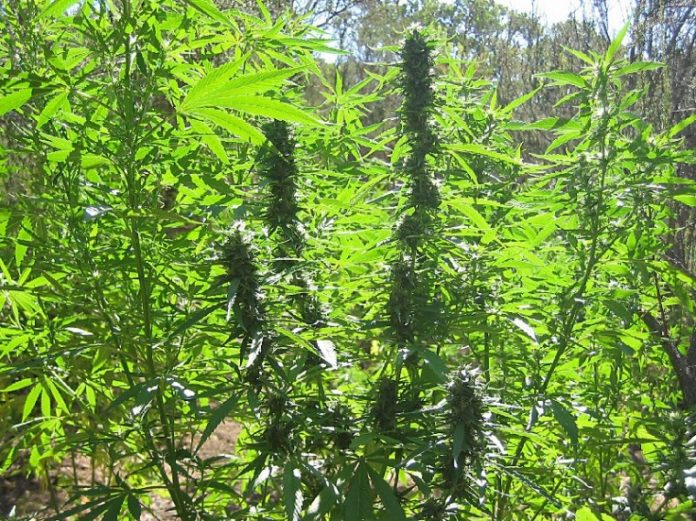Supervisors unanimously approved a marijuana cultivation “urgency” ordinance at today’s board meeting that halts all new marijuana cultivation operations within the county.
The approved law will temporarily ban large-scale grows and notes how, “nothing in this ordinance shall be construed to allow the use of marijuana for nonmedical purposes, or allow any activity relating to the cultivation, distribution, or consumption of marijuana that is otherwise illegal under state or federal law.”
Plants under cultivation as of Sept. 27 are exempted by the ordinance with limited immunity. The exemption terminates after the plants are harvested, but that harvesting must occur before Dec. 27. A provision for an additional harvest is included and requires grow operations to register with the county by Nov. 30, with the number of plants not exceeding the number cultivated on the property during the last quarter. Cultivation can be done indoors or outdoors, but is restricted to medical purposes only.
“I think Supervisor (Margie) Barrios and Supervisor (Jaime) De La Cruz will agree this is a real complex issue,” said Supervisor Anthony Botelho. “We worked pretty hard drafting this ordinance and I think going into the future as things evolve in our state, we’ll continue to have to work on it.”
Following the board’s direction at a previous meeting, the marijuana ordinance prohibits large-scale, commercial cultivation by limiting the number of plants to six per parcel. It also prevents outdoor cultivation within 1,000 feet of schools and youth facilities, including parks. Outdoor cultivation within 1,000 feet of a residence without a fence surrounding the marijuana is prohibited, and is interpreted as being within 1,000 feet of another residence on a separate parcel. If the grower is not the legal owner of the parcel, he or she must have the owner’s consent for cultivation. Identification must be posted at the enclosure or structure.
Existing grow operations with more than six plants per parcel are required to submit an application through a process that allows the board of supervisors to determine on a case-by-case basis if the grow can continue. There’s limited immunity exemption time, which allows up to three months of current cultivation to continue and gives a grace period for growers to file an application.
Board Chairman Robert Rivas voiced his support for the urgency ordinance after thanking county staff for their work and the public for their comments.
“I want to see a moratorium. I don’t want to see a ban,” Rivas said. “I believe this is an evolving issue. I think that there are a number of issues that have yet to be resolved such as Proposition 64 in November and what the state’s going to do Jan. 1, what we assume is Jan. 1, 2018.”
The board had the choice of approving one of two cultivation ordinances: the urgency ordinance or the non-urgency ordinance. Both ordinances were similar, excluding the effective date. While the approved urgency ordinance was to take effect Sept. 27, the non-urgency ordinance would have taken effect Nov. 11.
The urgency ordinance is effective only 45 days, but supervisors can incrementally extend the ordinance for a total time of two years. Under state law, the moratorium cannot be extended beyond two years. All future extensions require a 4/5 majority vote. The extensions give county staff time to develop a more permanent ordinance, while still maintaining control on current grow operations in the county.










